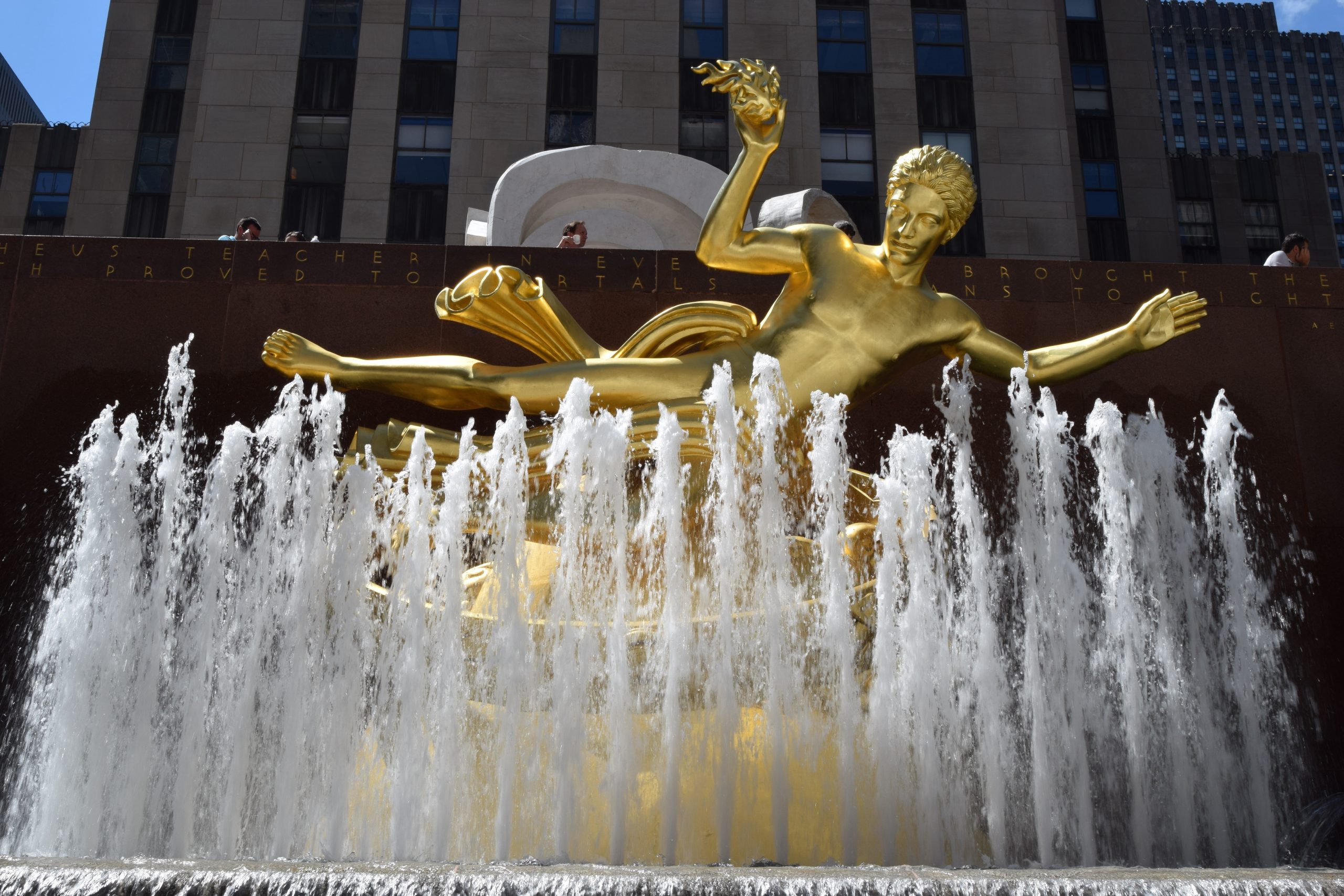Avoidance is the silent thief of life. It doesn’t shout or crash through our days. Instead, it whispers: “Not now,” “Maybe later,” or “What’s the point?” It often masquerades as prudence, patience, or even intelligence. But for many of us, avoidance is not a thoughtful delay, it’s a quiet, protective cage built from fear, shame, and the slow erosion of self-belief. Overcoming avoidance in therapy begins with recognizing this, not as failure, but as a pattern that once served a purpose, and can now be approached with care and understanding.
In this exploration, we’ll examine not only the psychological roots of avoidance but also its philosophical implications. To do so, we’ll call upon one of the oldest myths of courage and punishment: Prometheus stealing fire from the gods. A symbol of defiance, of stepping into the unknown despite the certainty of pain. Prometheus didn’t avoid. He acted. And he suffered. But he also gave mankind its first tool for becoming more than mere animals: fire, metaphorically the power of reason, of creation, of transformation.
What is it we are avoiding when we defer that conversation, dodge that risk, or abandon that dream? Pain? Shame? Or something even more profound, the call to grow? Avoidance can become a way of life. And yet, within each instance of avoidance lies a latent invitation: to live with intention rather than fear.
In the sections to come, we’ll unravel the psychology of avoidance and tie it to larger human themes, courage, rebellion, and self-transcendence. We will explore therapeutic tools, philosophical insights, and the challenging emotional realities that underpin the habit of avoidance.
Understanding the Anatomy of Avoidance: A Foundation for Overcoming Avoidance in Therapy
Avoidance is often misunderstood as laziness or procrastination. But at its core, avoidance is a self-protective behaviour, a way the nervous system attempts to preserve psychological safety. It can manifest in overt forms, missing deadlines, ghosting opportunities, or subtler patterns like chronic indecision, over-researching, or burying oneself in comfort activities like gaming, pornography, or binge-watching TV. These actions are not failures of willpower. They are adaptations to emotional overload.
The psychological mechanism behind avoidance often ties into the fight-or-flight-freeze response, as well as the fawn response. When we perceive a threat, emotional or physical, our amygdala fires, mobilizing our body to escape. While this was invaluable in early human survival, it often misfires in non-life-threatening contexts, such as job interviews, vulnerable conversations, and artistic risks. Avoidance becomes a way to soothe the system by removing the perceived threat, even if the cost is long-term stagnation.
Trauma, especially developmental trauma, is one of the most potent roots of chronic avoidance. When early experiences taught you that your efforts weren’t rewarded, or worse, punished, you learn to associate action with failure or rejection. Over time, the belief calcifies: “If I try, I’ll get hurt. Better to not try.” The protective logic is airtight. And cruelly effective.
Shame is often avoidance’s closest companion. Shame says, “You’re not enough. Why even bother?” Avoidant listens and nods. It’s a quiet deal: Don’t take the risk, and I won’t let anyone see how ashamed you feel. This pact keeps you from public humiliation, but also from success, intimacy, and fulfillment. Because everything meaningful requires exposure.
Avoidance also has cultural dimensions, particularly in how masculinity is taught. Many boys are conditioned to associate vulnerability with weakness and action with dominance. However, taking authentic emotional risks, such as admitting fear, asking for help, or trying something new, doesn’t fit the script. Instead of acting courageously, many of us retreat into silence, sarcasm, or stoic detachment, mistakenly believing it to be a sign of strength.
Understanding avoidance as a form of protective adaptation rather than failure allows for a gentler entry into change. Instead of condemning yourself, you begin to understand that this habit originated as a survival strategy. But survival is not the same as living. And to live, you must move toward the very thing you fear.
The Prometheus Within: A Symbolic Lens for Overcoming Avoidance in Therapy
The story of Prometheus, while mythological in nature, offers a meaningful metaphor for how many people experience avoidance. In the myth, Prometheus takes fire from the gods and offers it to humanity, an act of defiance that results in his punishment. He’s bound to a rock, where each day he endures pain as a consequence of offering something essential: light, warmth, and the capacity to act with awareness.
This isn’t a story about recklessness. It’s a story about what it means to move toward something meaningful, even when it comes with difficulty. In therapeutic terms, this can mirror what it feels like to begin acting in the face of long-standing avoidance. It often comes with discomfort. There may be internal resistance, fear, or even pain. But it can also mark the beginning of agency, reclaiming the ability to choose and engage, even when the nervous system is telling you to withdraw.
Avoidance, as we’ve explored, is not weakness. It’s an adaptive response to real experiences of overwhelm, rejection, or threat, often ones learned early and reinforced over time. But what once kept you emotionally safe may now be keeping you emotionally stuck. Like the image of Prometheus bound to a rock, avoidance can quietly immobilize us, even when it looks like we’re simply “taking time” or “playing it safe.”
Working through avoidance doesn’t mean jumping into risky situations or pushing yourself beyond capacity. Therapeutically, it often involves taking small, intentional steps: recognizing what is being avoided, exploring the fear or memory attached to it, and gradually learning to tolerate the discomfort that comes with re-engaging. It’s not about dramatic transformation, but rather being consistent and compassionate toward change.
The Promethean metaphor is helpful because it reminds us that meaningful change often carries weight. Not because change is inherently harmful, but because the systems that kept us safe also resist being disrupted. Therapy offers a space to explore that resistance without judgment. To understand that the goal is not to “conquer” fear, but to build the internal safety to approach it gradually, at your own pace.
In this way, Prometheus becomes less a symbol of rebellion and more a symbol of re-engagement. His story reflects what it means to step toward your life after a long time away from it. Not all at once, not perfectly, but thoughtfully, with support, and with a growing sense that movement is possible again.
The Neurobiology of Risk: Rewiring the Fear Loop
The brain is a prediction machine. It learns from past outcomes and designs the future accordingly. If risk once led to embarrassment, criticism, or failure, the brain logs that as danger. The next time a similar opportunity arises, sound the alarm: avoid! The brain is trying to protect you. But its algorithms are outdated. What once kept you safe may now be keeping you stuck.
Neuroscience shows that avoidance strengthens fear pathways in the brain. Every time you avoid, you reinforce the association between fear and threat. This is called negative reinforcement: removing the anxiety feels good, so you do it again. However, in the long term, this leads to increased sensitivity, decreased confidence, and a shrinking comfort zone. The more you avoid, the more you fear.
Exposure therapy, a cornerstone of modern anxiety treatment, works by doing the opposite: facing the feared situation in controlled doses. Each exposure teaches the brain: “This isn’t deadly.” Over time, the amygdala quiets, the prefrontal cortex gains control, and your world expands. The same principle applies to life choices. Tiny risks, taken repeatedly, build tolerance and confidence.
Mindfulness plays a crucial role in breaking the cycle of avoidance. By learning to observe fear without reacting to it, you disrupt the automatic avoidance pattern. Breathwork, meditation, and body scanning can anchor you in the present, allowing you to respond rather than react. This is the beginning of agency: choosing what to do with fear, instead of letting it decide for you.
Another key neurological factor is dopamine, the brain’s reward chemical. Avoidance often hijacks dopamine through “cheap wins”: scrolling, porn, snacking. These short-circuit the reward system and decrease your motivation for real-world effort. By setting and achieving small, meaningful goals, you reset the dopamine system to associate effort with satisfaction, not escape.
Understanding your neurobiology doesn’t remove the challenge of change. But it gives you a map. Avoidance is not weakness. It is a neural pattern. And patterns can be rewired. Not easily. Not quickly. But undeniably. If you’re willing to face what you fear, your brain will eventually follow your courage.
Shame, Self-Worth, and the Invisible Weight We Carry
Avoidance is rarely about the task itself. It’s about what the task symbolizes: worth, competence, lovability. If you believe, deep down, that you are not enough, every risk becomes a referendum on your value. Better not to try than to confirm the fear: “I’m not capable.” This is the logic of shame. It masquerades as humility but acts like poison.
Shame, for some, can be the emotional engine of avoidance. While fear says, “I might fail,” shame whispers, “I am a failure.” It’s not about what you do, it’s about who you believe you are. And when shame dominates your self-concept, action becomes a minefield. You might avoid applying for a job, not because you’re unqualified, but because part of you believes you’re unworthy of success.
Brené Brown, a researcher on vulnerability and shame, emphasizes that shame thrives in silence. The more you hide, the stronger it gets. Speaking your shame, whether in therapy, journaling, or trusted relationships, is an antidote. Not a cure, but a beginning. Shame feeds on secrecy. Expression weakens its grip.
Many are taught to confuse shame with accountability. They believe beating themselves up is noble. But self-flagellation doesn’t motivate change; instead, it paralyzes it. Real growth begins with self-compassion: seeing your avoidance not as a character flaw, but as a wound seeking healing. You cannot hate yourself into courage.
Therapeutic modalities like Internal Family Systems (IFS) and Compassion-Focused Therapy (CFT) teach us to meet shame with curiosity rather than judgment. What part of you is so afraid of being seen? What memory does your avoidance protect you from? When you turn toward the hidden, frightened parts of yourself, they begin to soften. You stop running. You start integrating.
To act, you must believe you’re worth the effort. That your voice matters. That your desires are valid. This doesn’t mean arrogance, but being human. Shame tells you that you’re alone in your unworthiness. But the truth is: all of us carry this weight. The question is whether we let it crush us or transform us.
Emotional Numbing: Comfort as the Enemy of Growth
One of avoidance’s most seductive forms is emotional numbing. Instead of directly fleeing a task, we often unconsciously disconnect from the emotional signal altogether. They scroll for hours, play video games late into the night, drink more than usual, or dive into workaholism. These behaviours don’t feel like avoidance; they feel like relief. But they come with a cost.
Emotional numbing isn’t just about avoiding discomfort; it’s about preventing aliveness. Pain and joy share the same emotional circuitry. When you numb yourself to fear, you also numb yourself to passion, intimacy, and the meaning of life. This is why chronic avoidance often feels like a vague emptiness, a low-grade depression. You’re not in crisis, but you’re not living, either.
The nervous system, when chronically overwhelmed, defaults to numbing as a survival strategy. If fear or shame becomes too intense, the body dissociates, disconnecting you from feeling. This dissociation can be physical (feeling foggy, spacey, or detached) or behavioural (constantly distracting yourself from your thoughts). Over time, it becomes the new normal: a life spent avoiding sensation.
Healing requires reconnection. Slowly, gently, you must begin to feel again. This is not easy. Emotional re-engagement can be terrifying for those who’ve spent years numbing out. But through practices like mindfulness, breathwork, and trauma therapy like Cognitive Processing Therapy or Prolonged-Exposure Therapy, you can relearn how to stay present with discomfort without fleeing it. This is the foundation of resilience.
Ask yourself: What do I reach for when I feel anxious, uncertain, or bored? What am I trying not to feel? Is it sadness? Loneliness? The fear of failure? You don’t need to feel ashamed about using these coping mechanisms. They made sense once. But today, you have the opportunity to choose awareness over autopilot. To feel again. Even if it hurts.
Prometheus’ story is not comfortable. It hurts. But it also awakens. The question is not whether you can avoid pain, it’s whether you can live thoroughly enough to make the pain worth it. Comfort is not peace. It is sedation.
The Myth of Readiness: Waiting for the Perfect Moment
One of the most deceptive aspects of avoidance is the belief that we’re simply “not ready.” This belief feels rational. Sensible. Even mature. We tell ourselves: “Once I have more time,” “Once I feel more confident,” “Once things settle down.” But this belief system is a trap disguised as wisdom. Readiness is not a static condition; it is cultivated through action.
The myth of readiness keeps us stuck in a perpetual loop of preparation and delay. However, growth doesn’t work that way. Confidence is not a prerequisite for action; it is a byproduct of it. You don’t wait until you’re brave to do something; you do it scared. And then, over time, you build evidence: I can survive this. I am capable. This is how you update your self-concept.
Avoidance often clings to the illusion of control. If we can plan more, rehearse more, and perfect our performance, maybe we won’t feel as exposed. But life is inherently uncertain. The very act of living, of creating, loving, and risking, requires that you face uncertainty with open hands. Waiting for perfect conditions is like waiting for a wave to stop before you surf. It never happens.
Therapy often reveals that underneath the myth of readiness is a hidden fear: the fear that we will lose control, and with it, our sense of identity. Avoidance becomes a way of preserving a fragile self-image: “As long as I don’t try, I can still believe I could have succeeded.” It’s painful, but it maintains the illusion of potential. Action threatens to make that illusion real or destroy it.
But there’s power in embracing imperfection. There is beauty in the messy, unpolished first steps. Think of Prometheus again: not as a godlike figure, but as one who acted without certainty, who dared to reach for something greater, not because he was fearless, but because he knew the cost of inaction. There is a kind of readiness that only reveals itself in motion.
To dismantle avoidance, you must challenge the belief that clarity precedes action. Often, clarity follows it. Capability develops through experience. Growth happens through small efforts, not perfect conditions. Often it is the act of showing up, especially when confidence is absent, that builds the very strength we think we’re missing. The moment will never be perfect. But it will be real. And that’s enough.
Building Emotional Courage: One Step in Overcoming Avoidance in Therapy
Courage is often misunderstood as a fixed trait, something some people naturally have, and others simply don’t. But in a therapeutic context, we understand courage more accurately as a process: something learned, practiced, and nurtured over time. For many individuals, especially those who’ve been conditioned to associate strength with self-containment or emotional suppression, building a healthy relationship with courage can feel unfamiliar at first.
Importantly, courage doesn’t require the absence of fear; instead, it involves overcoming it. It means learning how to move alongside fear, acknowledging it, respecting it, and continuing anyway when doing so aligns with your values. The more this becomes a supported and intentional practice, the more possible it becomes to experience meaningful change. Over time, the emotional charge associated with fear begins to shift, not by force, but through safe and repeated exposure to manageable risks.
Therapeutic work-around avoidance often involves creating structured opportunities to practice this. Journaling through discomfort, scheduling small acts of vulnerability, or naming emotions in a trusted space are all examples of what this can look like. These practices aren’t dramatic; they’re often quiet, intentional, and deeply personal. But with consistency, they become the foundation for more sustained engagement with life.
James Hollis, a depth-oriented therapist and author, once wrote, “We are not here to fit in….we are here to become more and more of ourselves.“ Such growth can be uncomfortable, especially initially. Avoidance often feels easier in the short term because it relieves discomfort, but it also tends to reinforce the belief that we can’t tolerate distress. Reframing discomfort as a sign of growth, not failure, can create space for a gentler approach to self-improvement.
It’s important to emphasize that this isn’t about eliminating resistance or striving for perfection. Courage means developing a new relationship with the parts of yourself that hesitate or pull back. It means creating space for ambivalence, while still allowing forward movement when it feels appropriate. This can involve significant emotional work, naming what’s difficult, sitting with uncertainty, and exploring the story underneath the hesitation.
Courage, then, isn’t a single act. It’s a capacity you build, slowly and with support. It lives inside the routines and choices that align with who you’re becoming. And as that capacity strengthens, avoidance begins to loosen its grip, not because fear disappears, but because fear no longer decides everything. In therapy, we help clients develop this capacity in a way that honours their pace, history, and nervous system’s need for safety as they stretch into something new.
The Transformation of Identity: From Avoidant to Agent
Avoidance not only impacts behaviour, it quietly begins to shape how a person sees. Over time, repeated patterns of hesitation, withdrawal, or fear can solidify into identity-level beliefs, such as “I’m not someone who follows through,” “I can‘t handle pressure,“ or “Change never works for me.“ These beliefs are not facts, but they often feel true, especially when reinforced by years of lived experience.
Therapeutically, we understand that identity is not a fixed entity. It’s constructed, layered together from memories, emotions, social cues, and internalized messages. And because it’s built, it can also be carefully re-examined and revised. Moving from an identity shaped by avoidance to one shaped by agency doesn’t happen overnight, but it becomes possible through consistent and supported shifts in behaviour and thought.
Each time someone chooses a new response, starting a task they’ve long postponed, initiating a conversation they’ve feared, or even acknowledging a feeling they’ve avoided, they are reinforcing a different narrative: “I am someone who can engage.“ These moments may seem small, but they accumulate. They offer new evidence to the nervous system and the mind that growth is not only possible, but also already underway.
There is often grief in this process. Letting go of a long-held identity, even one that’s limiting, can evoke complex emotions. There may be comfort in the predictability of avoidance, and shedding it can feel disorienting. Therapy can help create space for this grief, not as a sign of regression, but as a natural part of stepping into something unfamiliar. Letting go of who you’ve been can be painful, but it also makes space for something new to emerge.
Sometimes, change also brings unexpected resistance from others. People around you may be accustomed to your old patterns, and shifts in your behaviour can disrupt those dynamics. It’s common to feel pressure to revert, to stay within what others find familiar. A therapeutic relationship can help support you in staying grounded, holding boundaries, and continuing to trust the work you’re doing, even if it’s not always mirrored or affirmed by those around you.
Habits and history may shape how you respond to the world, but they do not define who you are. Beneath those patterns is the capacity to notice, to reflect, and to make new choices; gradually, and with intention. While avoidance may have played a defining role in your story up until now, it doesn’t have to define what comes next. Therapy offers a space to rewrite, not who you are, but how you relate to yourself, and how you begin to re-engage with your life on your terms.
Conclusion: The Fire, the Chains, and the Choice That Still Remains
Throughout this reflection, we’ve explored the many ways avoidance can take root, not because we’re flawed or broken, but because we’ve learned to protect ourselves. We’ve examined how the body and brain respond to fear, how shame subtly tells us we’re not enough, how comfort can become a form of hiding, and how the concept of “readiness” can quietly keep us waiting. And through it all, we’ve listened for something more profound: the part of you that’s still here. Still curious and hopeful.
Avoidance isn’t the absence of courage; it’s the sign that courage is needed. And the fact that you’ve come this far means that part of you is already reaching forward.
To bring it all together, we return once more to the old myth of Prometheus, again, not as a symbol of dramatic rebellion, but as a metaphor for the moments we choose life over fear. Prometheus took the fire and offered it to humanity. And for that, he was bound to a rock, visited each day by pain, and yet still, he gave the fire. He chose to act, not because it was safe, but because it mattered.
In the story, the gods represent the inner voices that keep us small. The chains are the old beliefs, the shame, the stories that bind us. The rock is the comfort zone that begins to feel like a prison. The eagle is the pain we face when we grow. The liver is our emotional resilience, torn and regrown. And the fire is the quiet Light of awareness, courage, and choice. The gift that lives inside you, waiting to be shared with the world, starting with yourself.
Stepping forward doesn’t require fearlessness. What matters more is how you relate to the fear itself, with gentleness, rather than resistance. Change often begins not with grand gestures, but with small, deliberate movements toward what matters.
If something in this reflection spoke to you, if it stirred a sense that you’re ready to begin unfreezing the parts of yourself that have waited in the dark, know that you don’t have to take that next step alone.
At Luceris, we offer support for this kind of journey. Whether you’re seeking therapeutic guidance or simply a safe space to begin discussing what’s been difficult to articulate, we’re here to walk with you.
Your Light has never gone out. It’s still here. Waiting.
Reach out to Luceris to learn more or to book a session when you’re ready.







